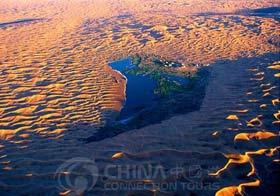 According to historical records, in the urban area of Ningbo, the Moon Lake was initially built in 636, the 10th year of the Tang Zhenguan period.
According to historical records, in the urban area of Ningbo, the Moon Lake was initially built in 636, the 10th year of the Tang Zhenguan period.
During the Southern Song Dynasty, a lot of towers, terraces and pavilions were built in the region that form the ten wonderful scenic attractions surrounded with seven bridges and three embankments.
In 833, Magistrate Wang Yuanwei of Maoxian County (the present Ningbo) decided to build water conservancy projects. Under his leadership, channels and weirs were built and water from Lunshan Mountain was led through the waterways into the city and two lakes, the Sun Lake and the Moon Lake thus came into being. During the Northern and Southern Song Dynasties, Ningbo had gradually grown into a flourishing metropolis, and a city of strategic importance that was close to the then capital city (Hangzhou in the South Song Dynasty). As the waterways within the city had been successively dredged, a crisscross water network, with the Moon Lake as the heart, was formed. It was well known with its "three rivers plus six canals with a lake at the core".
 In the past 800 years, the Moon Lake has been an important academic spot, well known in south China for its fine education tradition and many historical celebrities and poets in China like He Zhizhang, Wang Anshi, and Sima Guang often gathered here to enjoy the beautiful scenery of the Moon Lake.
In the past 800 years, the Moon Lake has been an important academic spot, well known in south China for its fine education tradition and many historical celebrities and poets in China like He Zhizhang, Wang Anshi, and Sima Guang often gathered here to enjoy the beautiful scenery of the Moon Lake.
In the Moon Lake Scenic Area, there are such places of interest as Fang's Residence at the entrance of the Lake, the Qin's Ancestral Hall (the present Ningbo Handicrafts and Arts Gallery), the Site of Koryo Embassy.
